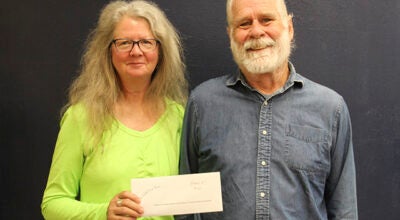Grants aim to get children outside, learn good habits
Published 9:00 pm Tuesday, October 25, 2022
|
Getting your Trinity Audio player ready...
|
Last Thursday the Minnesota Department of Natural Resources announced another phase of No Child Left Inside grants, created to help students learn to fish, study animal tracks, be able to hike or bike or simply learn more about nature.
Albert Lea Area Schools was a phase 2 grant recipient and received over $23,680. The district even has a new outdoor preschool class at Brookside Education Center designed to get students outside.
Jeff Ledermann, education and skills team supervisor within the Department of Fish and Wildlife, said it was important to get children outside earlier as it would get them more familiar and comfortable earlier.
“There’s a growing body of research that is showing how critical and important it is for people to connect to the outdoors and to get outside,” Ledermann said. “There are a number of reasons why.”
From a researcher’s perspective, people, especially children, who spent more time outside were more likely to care about nature and were more willing to preserve or take care of the outdoors.
Another reason: the increasing amount of screen time among youth meant they were less active. According to Ledermann, children who spent more time outside were more physically fit and had better balance when walking on hills and rocks or stepping over logs compared to a sterile gym floor.
“And then from the educational side, there’s a lot of research that shows that kids that learn outside, spend time outside as part of school or part of classes where the outdoors and nature is integrated, again not only is the physical part better, but they also have better behavior. They get along better, they have better attitudes, they have more creative thinking, they’re more interested in the subject matter and frankly do better in school.”
And finally, he said it was safer to be outside as there was less risk of coming in contact with a virus.
Ledermann, a former teacher himself, said he noticed that one of the activities in the science curriculum provided for his own child asked students to compare living and nonliving organisms.
“They had a beautiful nature area, 11 acres of school forest, outside the back door,” he said. “You want to talk about living and nonliving organisms, go outside and actually smell, see, look at and touch living organisms and nonliving organisms.”
Ledermann said children who grew older without those experiences could become more cautious or fearful about what they could find outside.
“A lot of habits and activities and physical wellness and stuff is established at a very young age, so the sooner we can get them engaged in it the better it’s going to be for them, the healthier they’re going to be,” he said.
He also noted children were better at handling bad weather and were more adaptable.
The first round of No Child Left Inside grants were awarded in 2019, and grants were awarded on a first-come-first-serve basis, and all the grant money was gone in six minutes.
“We have over 400 applications by noon that day,” he said. “Just a tremendous response.”
Ledermann also stressed the importance of maintaining the planet, minimizing human impact and protecting resources.
“Getting connected with nature, … having those experiences and learning about nature and the environment does create people who are better stewards and are more willing to take care of it,” Ledermann said.
He also emphasized one of the high priorities for the program was helping students with limited opportunities.




